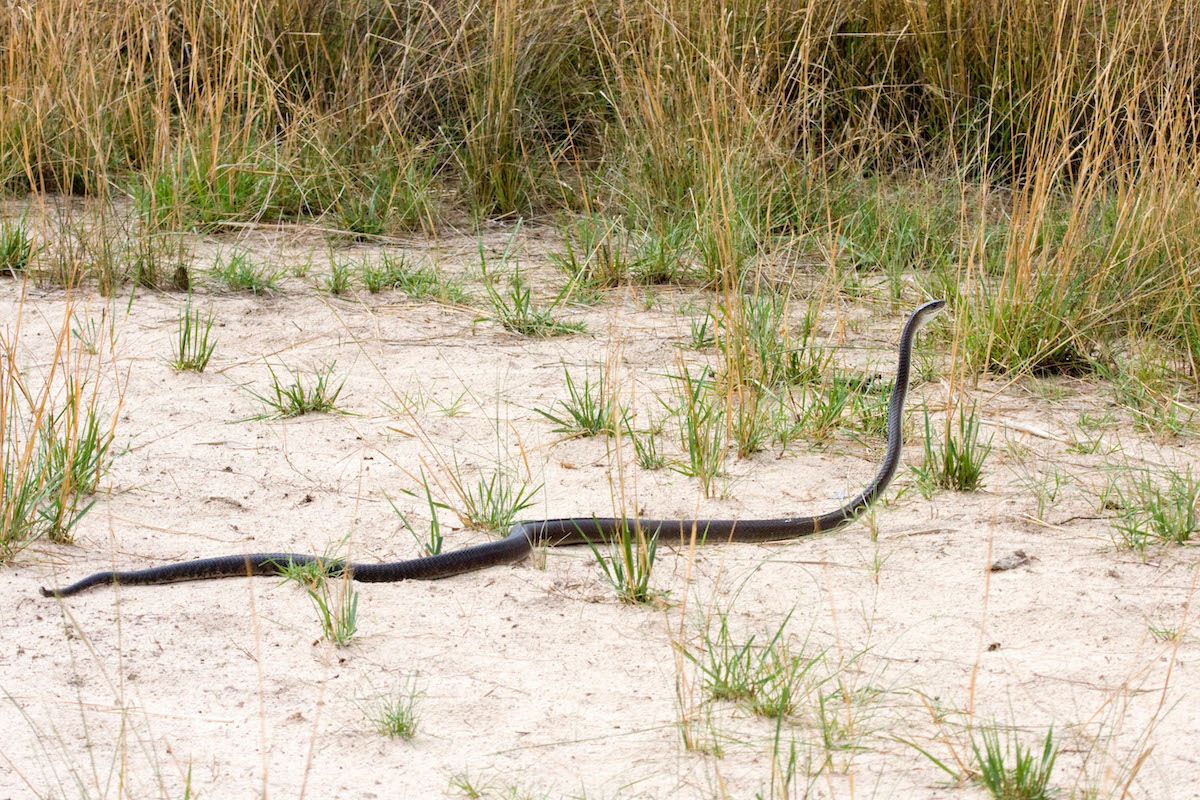Black mamba: If you see one, run
There are not too many critters to fear in the UK, but if you are faced with an angry black mamba in Africa there’s only one option — run, warns Alasdair Mitchell

Black mamba in Namibia
Wanting to call in my labrador, I reached for my whistle and blew. The sound that emerged was ‘phut’. I blew harder. Same result. I removed the whistle from my lips and peered at it. As I watched, an earwig scrambled out of the wind slot. Yuk. Having wiped the mouthpiece, I tried again. Another ‘phut’. Another earwig crawled out. Double yuk.
The wrong sort of critter
You may wonder how I could be so stupid as to blow again before checking thoroughly. Well, I thought it must be a one-off. Yet if you go creeping and crawling about in the countryside, you will inevitably encounter the wrong sort of critter.
Black mamba
Take snakes, for example. I used to keep grass snakes as pets. I haven’t seen an adder for years and I don’t think they are very dangerous — except to dogs, perhaps. In Africa, there are some seriously venomous snakes, but they generally try to keep out of your way. The one you really don’t want to meet socially is the black mamba. It injects a lethal neurotoxin. As little as two drops can kill.
Swift death
A few years ago, a 28-year-old British trainee safari guide encountered a black mamba at a college in Limpopo Province, South Africa. He thought it had barely brushed his hand. After checking with college staff, he carried on with his lectures. An hour later, he was dead.
My friend Kerim had a phobia about snakes, so the last time we went hunting in South Africa, he bravely booked on to a snake-handling course in Johannesburg. He emerged brimming with confidence. A few days later, three of us were out in the Lowveld of Limpopo Province, hunting. We climbed to the top of a rocky hillock to spy for game. A snake as thick as my arm raised itself up and glared at us, only a few feet away. We froze. The snake’s mouth gaped and its tongue started flicking. “Er, what sort of snake is that, Kerim?” asked my other friend, out of the side of his mouth. The response was a clatter of rocks as Kerim departed the scene. “It’s a mamba,” he shouted over his shoulder.
When we had caught up with him, he insisted that the approved method of dealing with a mamba — especially one that could be guarding its nest — was to get away from it. That training course was worth every penny.
Puff adder
In case you are thinking that snake venom is overrated, you should read professional hunter John Sharp’s account of being bitten by a puff adder in Zimbabwe. Despite excellent medical care, he nearly lost an arm. The hospital photos were later used in a medical journal.
Lyme disease risk
Here in the UK, ticks carrying Lyme disease are a worry for deerstalkers and grouse beaters. About 30 years ago, I knew a journalist whose wife caught the disease after a trip to the Canadian wilderness. Back then, the symptoms weren’t familiar to urban GPs in the UK. A young, very active woman, she declined over several years. By the time her Lyme disease was diagnosed, it was too late; she developed complications and died. Such a tragedy is very unlikely to happen today, but you do need to get the right treatment without delay. (Read more about Lyme disease here.)








